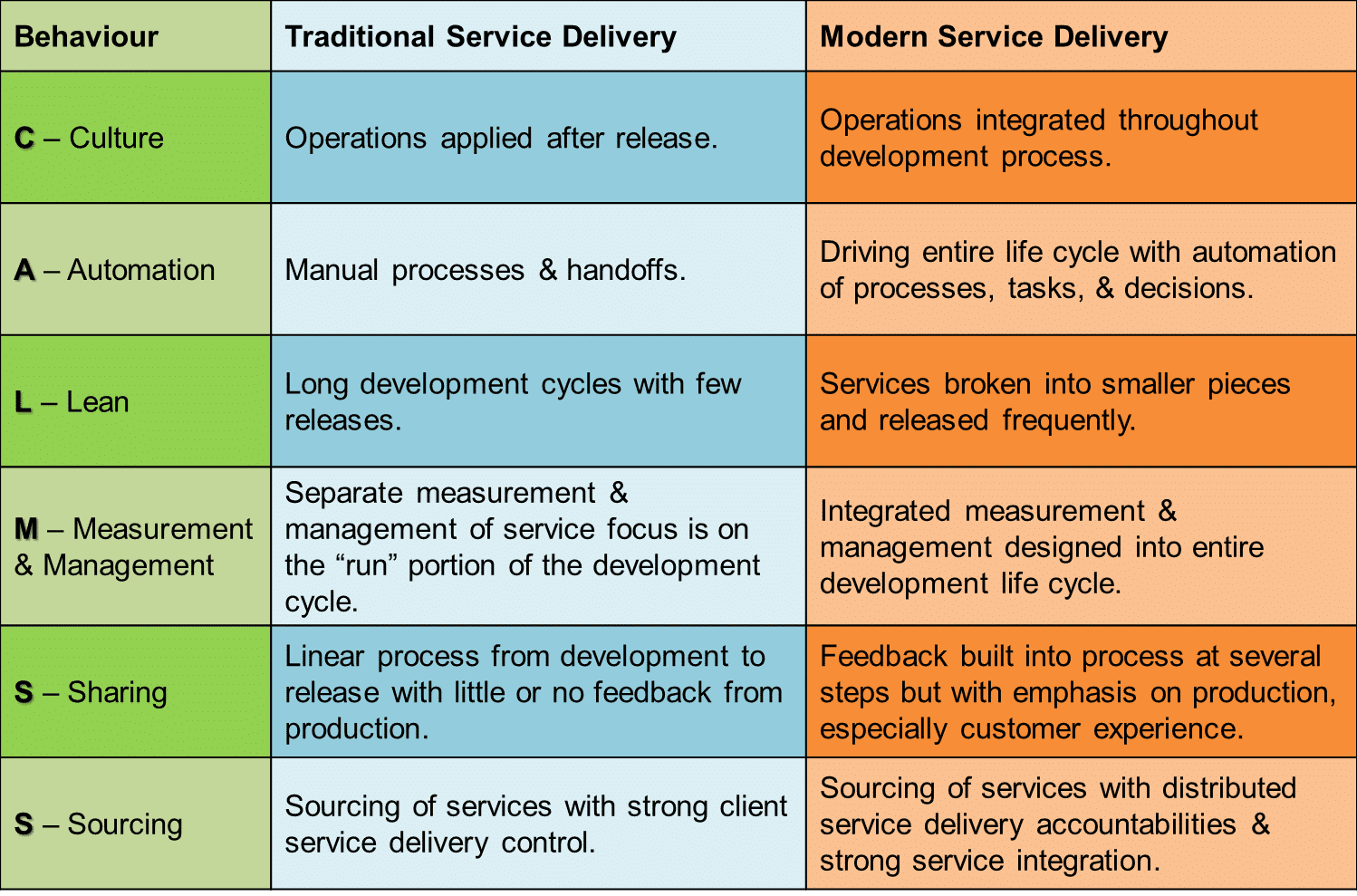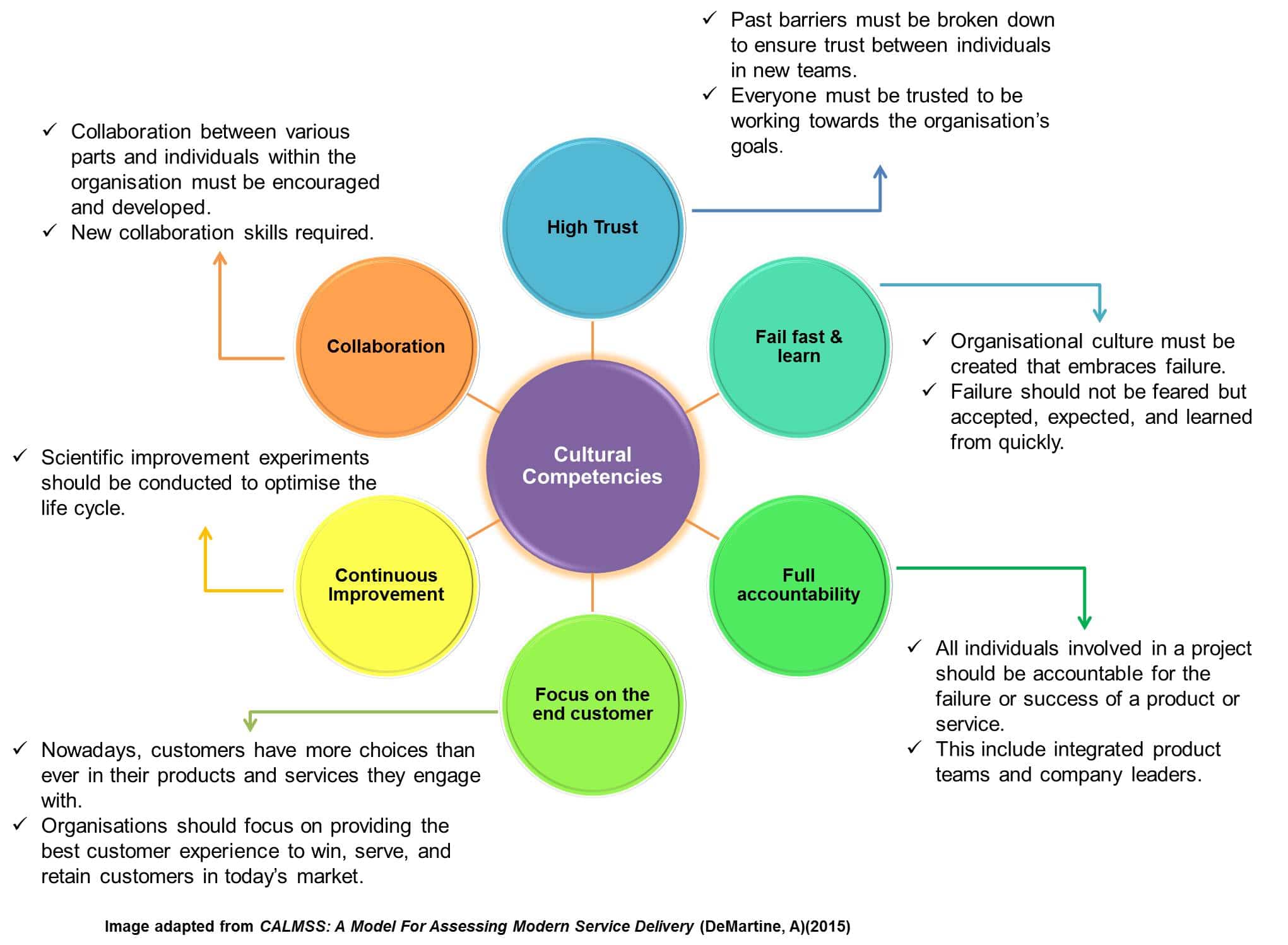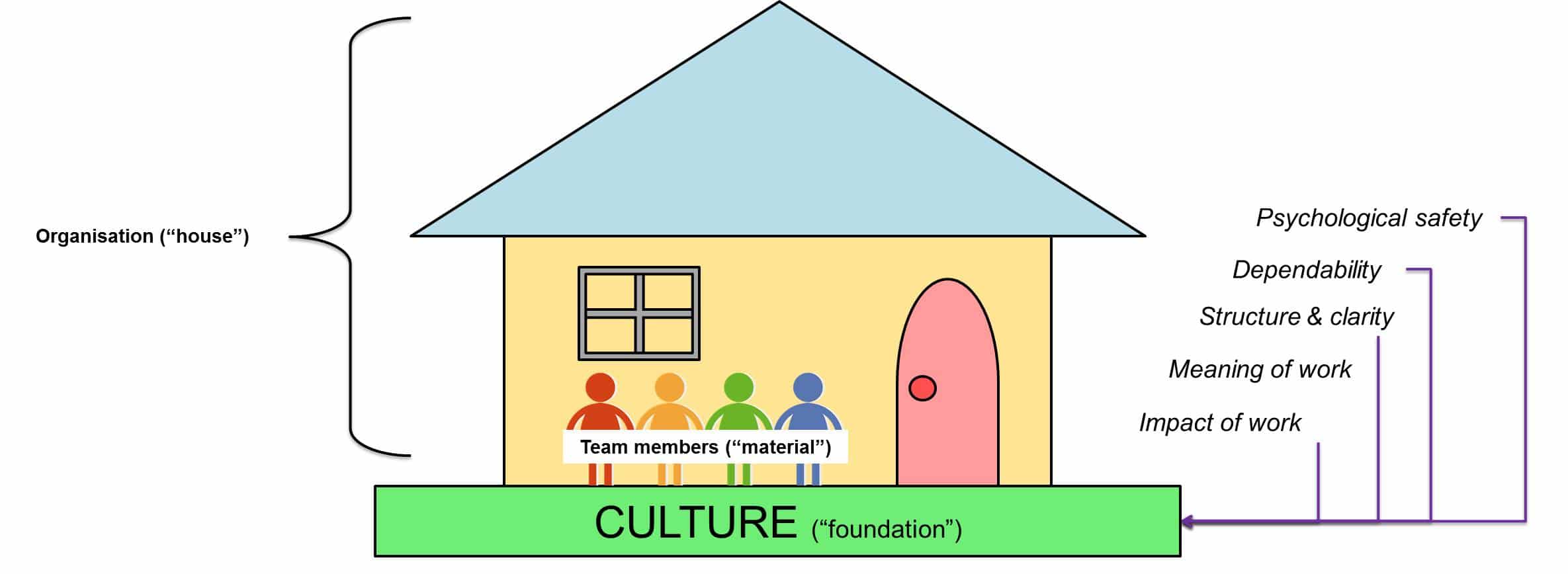The impact of culture on the organisation cannot be underestimated as culture affects all of an organisation. If the culture of an organisation and its individuals is not addressed and managed, any attempts to make improvements will fail.
CALMSS Model (Recap)
As discussed in the 10th Lecture on Service Management in our Modern IT Management lecture series, successful service management relies on the organisation’s ability to shift its focus from mere traditional service delivery to modern service delivery that utilises competency models such as CALMSS (Culture, Automation, Lean, Management & Measurement, Sharing, and Sourcing).
Below is a table summarising the CALMSS model and the improvements that it adds to modern service delivery compared to traditional service delivery, as seen in the Service Management lecture.

In this lecture, however, we will hone in on the cultural aspect of this model and discuss the impact culture has within an organisation. This will be done by considering how culture impacts an individual and, in turn, a team and how this culture can contribute to the creation of a successful team. All of this combined contributes to optimised, effective, and modern service delivery within an organisation and, ultimately, its success.
The impact of culture on individuals and teams
The CALMSS model places, when looking at its cultural aspect, emphasises the necessity for a high-trust culture within an organisation. A quote that highlights this is taken from the vice president of eCommerce and store technologies at Nordstrom’s, Courtney Kissler, who said:
“What it starts with is people. If we are engaging the people doing the work and we are not leveraging what they know and asking them to help, I just think it all falls down.”
In other words, the importance of the impact of culture on other areas within the organisation cannot be underestimated because culture affects all of these areas dramatically. If the culture of an organisation and its individuals is not addressed and managed, any attempts to make improvements through the further steps in the CALMSS model (Automation, Lean, Management & Measurement, Sharing, and Sourcing) are fruitless and ineffective, much like treating the symptoms of an illness and not the cause, or building a house without a foundation.
In simpler terms, organisational culture is the glue that binds the other areas together and ensures that attempts at improvement “stick” and can remain long-term. Cultural management within an organisation focuses on discontinuing detrimental past behaviours or simplifying them to assess and improve competencies to further the organisation’s long-term success and avoid repetition of existing/past problems.
The diagram below depicts the competencies within organisational culture and their descriptions.

It is important, then, to remember that cultural management within an organisation is imperative for the long-term success of the organisation itself through the creation of successful teams within it.
What is a successful team?
As we’ve discussed, in both this lecture and the previous one, a successful team is more than just who is in the team. Individually, members of a team may exhibit personality traits and qualities that make them exceptional at their jobs. Importantly, however, these individuals when placed in a team that is not within the most optimised cultural atmosphere will not contribute to the organisation and its efforts as effectively despite their individual talents. A successful team is less about the individual “who” and more about the interaction between the team members, how they structure their work together, and how they view their contributions.
Along with this, 5 key dynamics have been identified that set successful teams apart from those who are less successful. These are:
- Psychological safety – do the members feel insecure or embarrassed in their team?
- Dependability – can the members rely on each other to churn out high quality work on time?
- Structure & clarity – are all the goals, roles, and plans clear within the team?
- Meaning of work – is the work personally meaningful and important to the members of the team?
- Impact of work – do the team members genuinely believe that the work they do matters?
Focussing on these dynamics improves the culture within the team which then further improves all other elements and aspects within this team and, in turn, the organisation.
To make this simpler to understand, let us consider the analogy of building a house. Each material needed to build that house is ineffective as a house on its own and, even when put together, will not build a solid house without a proper foundation. In this analogy, the individuals in a team are the materials needed to build a strong and stable house i.e. organisation. The culture within this team and organisation is its foundation and is what makes it strong, stable, and effective. If all these materials do not come together effectively, the entire house will, as Courtney Kissler said, “fall down”. This analogy is depicted in the graphic below.

Conclusion
Competency models, such as the CALMSS model, are important framework used by organisations to optimise their functioning and contribute to their success. Very importantly, however, the cultural aspect of these models and the impact it has on the organisations must be considered because culture filters through all other aspects in the organisation. It is the foundation of efficient and successful functioning within individuals, teams, and the entire organisation. Thus, it must be understood and its impact assessed such that the organisation can create a culture that promotes productivity, trust, and success.
References
DeMartine, A., Oehrlich, E. & Doerr, M., 2015. CALMSS: A Model For Assessing Modern Service Delivery. For Infrastructure & Operations Professionals, pp. 1-14.
Rozovsky, J., 2015. The five keys to a successful Google team. [Online]
Available at: https://rework.withgoogle.com/blog/five-keys-to-a-successful-google-team/
[Accessed 7 September 2017].
Previous Post |
Next post |
What is culture? |
Cultural types |
For all our Digital Culture and People Management Lectures.
For all our Podcasts.